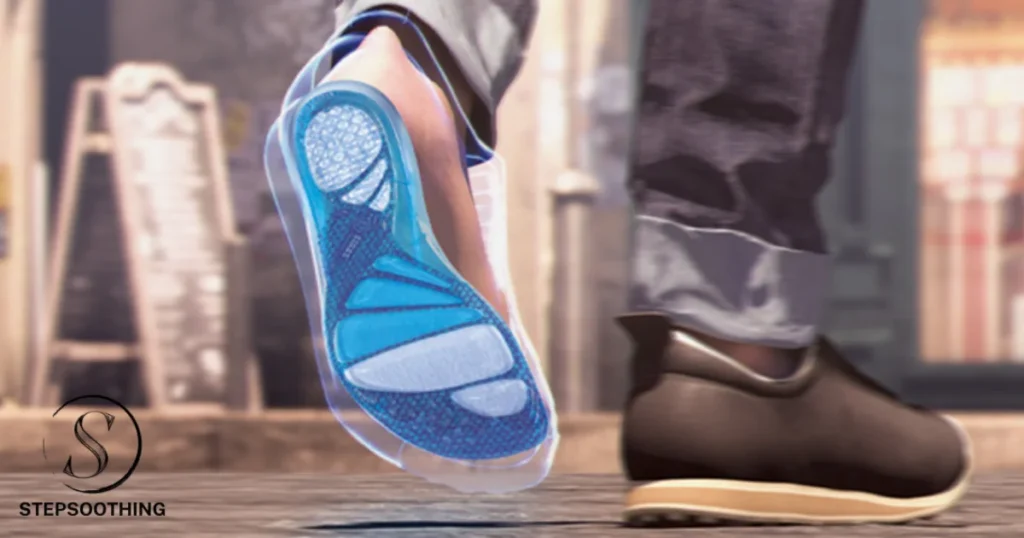Insoles can be a game-changer when it comes to comfort and support for your feet. Whether you’re dealing with foot pain or simply want to enhance the overall fit of your shoes, wearing insoles can make a world of difference. In this article, we’ll explore everything you need to know about wearing insoles, from finding the right pair to inserting and maintaining them properly.

Have you ever experienced discomfort or pain in your feet while wearing your favorite shoes? If so, it might be time to consider wearing insoles. Insoles, also known as shoe inserts or footbeds, are specially designed to provide additional support, cushioning, and stability to your feet. They can improve your overall foot health and make your shoes more comfortable to wear.
1. What are Insoles?
Insoles are removable inserts that are placed inside your shoes to provide additional support and cushioning. They come in various designs and materials to cater to different foot types and conditions. Insoles can be made of foam, gel, or orthotic materials and are usually shaped to contour to the natural arch of your feet.
2. Why Use Insoles?
i. Benefits of Wearing Insoles
Wearing insoles offers several benefits for your feet, including:
- Improved Comfort: Insoles provide extra cushioning, relieving pressure and reducing fatigue. They can make your shoes feel more comfortable, especially if you spend long hours on your feet.
- Enhanced Support: Insoles offer additional arch support and stability, which can help alleviate foot pain caused by flat feet or high arches. They can also improve your overall posture and reduce stress on your joints.
- Reduction of Pain: Insoles can help alleviate pain caused by various foot conditions, such as plantar fasciitis, metatarsalgia, or Achilles tendonitis. By providing targeted support and cushioning, they can help ease discomfort and promote healing.
ii. Different Types of Insoles
There are different types of insoles available to address specific foot needs. The three main types are:
- Comfort or Cushioning Insoles: These provide extra shock absorption and cushioning to enhance comfort during everyday activities.
- Support or Orthotic Insoles: These offer customized support for individuals with specific foot conditions, like flat feet or high arches.
- Sports or Performance Insoles: These are designed for athletic activities, providing extra support, stability, and shock absorption.
Read More
Can Insoles Help Alleviate Back Pain? Click Here
Insoles for Shoes: Comfort Redefined, Style Enhanced Click Here

3. Finding the Right Insoles for Your Feet
To ensure you get the maximum benefit from your insoles, it’s important to find the right ones for your feet. Consider the following factors when choosing the right pair:
i. Understanding Your Foot Type
Begin by understanding your foot type. Are you flat-footed, have high arches, or neutral arches? This information will help you determine the level of support your feet require.
ii. Foot Conditions and Specific Needs
If you have any specific foot conditions, such as plantar fasciitis or bunions, consult with a podiatrist or healthcare professional. They can recommend insoles tailored to your needs and provide valuable advice on managing your condition.
4. How to Choose the Right Insoles
Once you have identified your foot type and specific needs, keep the following factors in mind when selecting your insoles:
i. Arch Support
Consider the level of arch support your feet require. Some insoles offer high arch support, while others cater to low arches or flat feet. Choose the one that aligns with your foot type.
ii. Material and Cushioning Options
Insoles come in various materials, such as foam, gel, or memory foam. Each material has its own advantages, so pick the one that offers the right balance of support and cushioning for your feet.
iii. Size and Fit
Ensure that the insoles you choose fit properly inside your shoes. Most insoles come in standard shoe sizes, but some brands offer customizable options for a more precise fit.

5. Inserting Insoles into Your Shoes
Once you have your perfect pair of insoles, it’s time to put them into your shoes. Here’s a step-by-step guide to help you insert them properly:
i. Preparing Your Shoes
Make sure your shoes are clean and dry before inserting the insoles. Remove any existing insoles and check if your shoes have removable sock liners. If so, take them out too.
ii. Proper Placement of Insoles
Place the insoles inside your shoes, making sure they align with the arch of your foot. Ensure they sit flat and snugly without creating any discomfort. Adjustments may be needed to achieve the perfect fit.
6. Wearing Insoles for Different Activities
Insoles can be used for various activities to provide optimal comfort and support. Here are some scenarios where wearing insoles can be beneficial:
i. Everyday Wear
For everyday activities, wearing insoles can make a significant difference in the comfort of your shoes. They provide cushioning and support, reducing fatigue and allowing you to stay on your feet for longer periods without discomfort.
ii. Sports and Physical Activities
During sports and physical activities, our feet endure increased stress and impact. Wearing sports insoles can help absorb shock, enhance stability, and improve overall performance. Whether you’re running, playing basketball, or hiking, insoles can make your athletic experience more enjoyable.

7. Maintaining and Cleaning Your Insoles
To keep your insoles in good condition and ensure their longevity, follow these maintenance tips:
- Regular Cleaning: Clean your insoles regularly with mild soap and water. Let them air dry completely before reinserting them into your shoes.
- Odor Control: Sprinkle baking soda or use odor-controlling insole sprays to prevent unpleasant smells.
- Replace When Necessary: Insoles wear out over time, losing their support and cushioning. Replace them when you notice signs of wear and tear or diminished comfort.
Read More
Decoding Durability: How Long Do Insoles Last? Click Here
Can You Put Shoe Insoles in the Dryer? Click Here
Sole Solutions: Tips and Tricks on How to Clean Shoe Insoles Click Here
8. Frequently Asked Questions
Q1. Can I use the same insoles for different pairs of shoes?
Yes, you can transfer your insoles between different pairs of shoes as long as they fit properly and provide the desired level of support and comfort.
Q2. How long do insoles typically last before needing to be replaced?
The lifespan of insoles varies depending on factors such as usage frequency and intensity. On average, they can last anywhere from six months to a year before needing replacement.
Q3. Can insoles help with back pain?
Yes, insoles can help with back pain by improving your overall posture and providing proper alignment and support to your feet, which can alleviate strain on your back.
Q4. Are insoles only for athletes and people with foot problems?
No, insoles can benefit anyone looking for extra comfort and support in their shoes. They are not limited to athletes or individuals with foot problems.
Q5. Can I trim my insoles to fit my shoes better?
Some insole brands offer trimmable options to achieve a better fit. Follow the manufacturer’s instructions if trimming is recommended for the specific insoles you have.
9.Conclusion
Insoles are a practical and effective way to improve the comfort, support, and overall fit of your shoes. By investing in the right pair and wearing them correctly, you can provide your feet with the care they deserve. Remember to choose insoles that match your foot type and specific needs, follow the proper insertion techniques, and maintain them regularly. Whether you’re going about your daily routine or engaging in physical activities, your feet will thank you for the added support and comfort provided by insoles.



